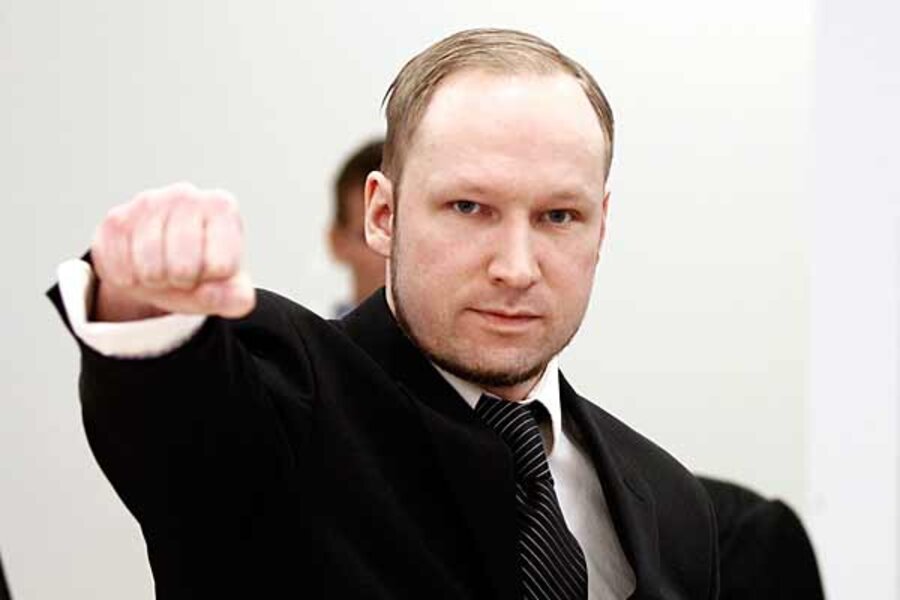Why does Norway's Breivik invoke the Knights Templar?
Loading...
One of the highlights of today's testimony in the trial of Anders Behring Breivik, who is accused of the murder of 77 people during a bombing and shooting rampage in Norway, was the prosecutor's efforts to challenge Mr. Breivik's purported membership in the "Knights Templar."
Breivik claims to have helped "refound" the ancient military order as a force to fight immigration and multiculturalism in Europe. But why turn to a long-gone Christian order to symbolize his agenda today?
The Knights Templar, or "Templars," were a Christian order founded in the 10th century. Named for the Temple Mount in Jerusalem, the Templars initially protected pilgrims traveling through the Holy Lands, but eventually evolved into a powerful military force that waged war against the Muslims during the Crusades.
The Templars became so powerful, however, that European leaders grew to distrust the order. Early in the 1300s, King Philip IV of France launched a crackdown on the Templars that, with the help of Pope Clement V, eventually spread Europe-wide, destroying the order. Many members were tortured and tried for heresy by the Catholic Church.
But despite, or perhaps because of, their ancient history and sudden demise, the Templars still hold a solid grip on modern imaginations and pop culture. They are frequently depicted as the mysterious controllers of the world in books like Umberto Eco's "Foucault's Pendulum" and movies like "National Treasure." "The Da Vinci Code" and "Indiana Jones and the Last Crusade" set the Templars up as secret keepers of the Holy Grail. They even appear as the enemies in video games like "Assassin's Creed."
Certainly, the organization that Breivik claims to be a member of is equally mysterious. Breivik describes the organization as "a leaderless network, made to be self-driven cells.” He said that “For militants, [Knights Templar] is meant to be a version of Al Qaeda." He has yet to name another member of the group, claiming that to do so would risk their being caught, though he has indicated that his "English mentor" can be found in London and that a Serb "war hero" living in Liberia is among the group's ranks.
Whether or not the Templars in which Breivik claims membership are real, the name is likely meant to evoke both the mysterious nature of the original Templars and their open war against Muslim forces during the Crusades. The historical Templars' modern reputation and supposed influence makes a strong symbolic counterpoint to terrorist groups like Al Qaeda.
Monitor guest blogger James Bosworth suggested that the use of the name may also be meant to legitimize the group as a moral one.
Last July, Mr. Bosworth noted that Breivik was not the first violent criminal to invoke the Templars: A Mexican criminal gang has also adopted the name and some of the associated symbolism. But Bosworth concludes that "The Mexican Knights Templar code of conduct appears to be a false appeal to Mexico's citizens," something that could also be argued of Breivik's use of the Templar mythology. "The Knights Templar label is a failed attempt to grant historical legitimacy to a violent act that truly has no justification," Bosworth wrote.





